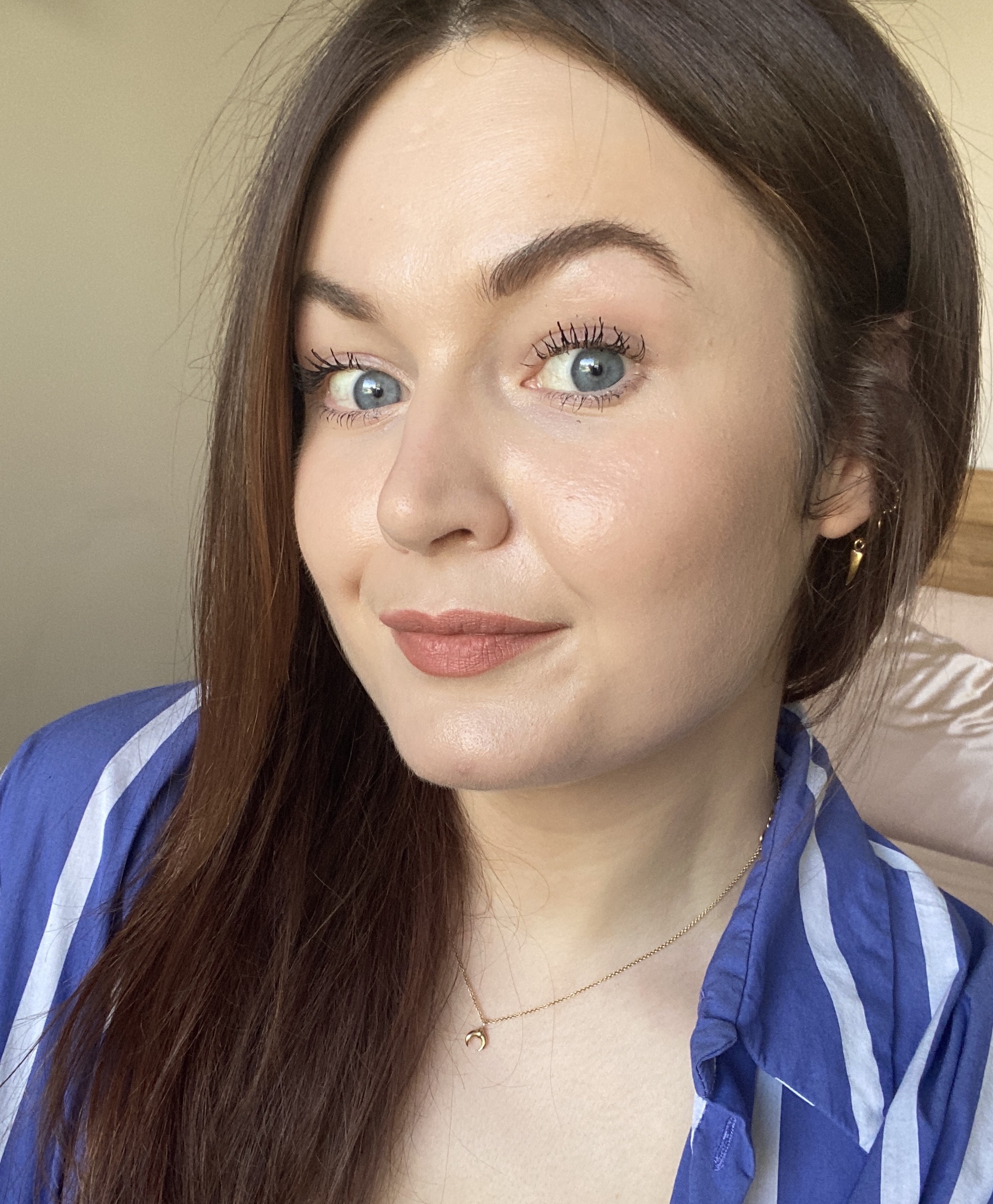The 7 essential things to know before trying teeth whitening, according to dentists
Considering teeth whitening? Whether it's in the dentist's chair or at home, here's everything you should consider before going ahead


We all know the importance of looking after our teeth by brushing twice a day and visiting the dentist for check-ups. But how clued up are you about cosmetic dental work? There are a few things to know about teeth whitening before you book in for a course of treatment – and the realities of the various at-home methods.
There is an array of over-the-counter products available to buy for at-home use, from the best whitening toothpastes to single-use strips, and these do have their place for less intense results. However, professional teeth whitening involves stronger formulas with higher concentrations of the active agent – but must be carried out safely if you’re to get good results.
That’s why we spoke to two dentists to separate the myths from the facts and ensure that any teeth whitening you may choose to undergo is carried out properly. Here’s what you need to know before you try it…
How is professional teeth whitening different to over-the-counter kits?
As you’re probably aware, professional teeth whitening is carried out under the supervision of a dentist. “The difference is the number of active ingredients found in the whitening agents,” explains cosmetic dentist Dr. Krystyna Wilczynski. “In professional whitening, there is 16% carbamide peroxide, which breaks down to form hydrogen peroxide. These are the ingredients that change the colour of the surface level of the teeth, as well as deep stains in the enamel. When buying whitening strips or over-the-counter whitening products, they can legally only sell products with 0.1% hydrogen peroxide, meaning you will not be able to achieve the same results as a professional treatment.
Dr. Wilczynski notes that there is a place for over-the-counter products, such as whitening strips. “They are great to use before an event for a quick pick me up for your teeth – but for long-lasting and effective results, professional whitening is the way to go.”
It’s worth noting that, ahead of prescribed at-home whitening, your dentist will create custom trays that fit your teeth and gums, unlike the one-size options that come with an over-the-counter kit. “At-home whitening strips or kits often contain lower concentrations of whitening agents and use generic trays or strips that may not fit properly, leading to unreliable results or irritation to the gums and surrounding tissues,” explains Dr. Stephen Dodd, cosmetic dentist at Ringway Dental. "We’ve had people come into the clinic when they've bleached their gums and caused mild burns from generic trays."
7 things to know before professional teeth whitening, according to two dentists
1. You have to pay to see a professional
In the UK, it is illegal for anybody who is not a registered dental professional to offer dental services, which includes teeth whitening. This means you must see a dental professional for these treatments – either a dentist or another registered dental professional, such as a hygienist, on the prescription of a dentist. (You can check the General Dental Council’s register here if you’re unsure.)
Sign up to our free daily email for the latest royal and entertainment news, interesting opinion, expert advice on styling and beauty trends, and no-nonsense guides to the health and wellness questions you want answered.
Dr. Dodd explains that the importance of this lies in the uniqueness of everybody’s teeth; treatment is not a 'one size fits all' situation. “We need to properly assess you in-clinic to make sure you’re the right candidate and come up with a personalised treatment plan,” he explains. “Entrusting your cosmetic dental needs to an experienced dentist not only ensures the best aesthetic outcome, but it also protects your dental health.”
Don’t be tempted to take matters into your own hands and order professional-strength products online from random retailers. However trustworthy it looks or sounds, you can’t be sure of the product’s authenticity or safety and what seems like a good deal in the moment can cause headaches later on. Dr. Dodd stresses that “Buying dental products online or going to someone unlicensed can have quite serious health consequences for your teeth and gums. Without proper guidance, DIY attempts with products bought online can cause issues such as enamel erosion, gum irritation and, in some severe cases, even chemical burns.” In short, it’s just not worth the risk.
2. Not everybody is a good candidate
Many people can whiten their teeth with the help of a dental professional and will experience no issues. However, “People with certain dental conditions such as severe tooth decay, gum disease or extremely sensitive teeth may not be good candidates for whitening treatments,” Dr. Dodd explains. “Additionally, existing dental restorations like fillings, crowns, or veneers do not respond to whitening agents, which can result in uneven colouration. This is why it’s so important to consult with a dentist before undergoing any whitening procedure to ensure that it's safe and appropriate for you.”
3. It’s not risk-free, even in the hands of a professional
As with many treatments, there are potential risks with teeth whitening – but they are significantly lower when treated by a qualified dental professional. "These include temporary tooth sensitivity to hot, cold or sweet foods, possible gum irritation, and enamel damage if whitening products are overused or used improperly," explains Dr. Dodd. "Uneven whitening may occur, but dentists can address this with tailored treatment plans. With proper precautions, such as gum protection during treatment and regular professional supervision, these risks are minimised and patients can achieve a brighter smile safely.”
4. It's not a quick process
You may intuitively assume that in-chair results are quicker and, therefore, preferred by dentists for the best outcome. However, both dentists we spoke to for this feature recommend either prescribed home whitening or a combination of both methods for superior results.
Dr. Wilczynski notes that the length of time it takes to see results varies from person to person and is influenced by diet – consuming food and drinks that cause staining – and any smoking habits. "Generally, at home teeth whitening with trays takes approximately two-to-three weeks for the results to take hold," she tells us. "In-chair takes approximately two hours to achieve results, however I would not recommend in-chair as a standalone treatment. My recommendation would be a combination of both treatments." Dr. Wilczynski explains that this is because in-chair whitening only targets the outer enamel, while professional whitening at-home (which usually involves wearing your bespoke trays overnight), takes the bleach further and deeper into the teeth with longer-lasting results.
Aside from treatment time, the two approaches don’t differ as much as you might think. "There’s a misconception that in-clinic whitening involves a higher concentration of whitening agent, but that’s not the case," adds Dr. Dodd, who believes at-home whitening offers the best results. "The highest you can go for both at-home and in-clinic is 16% carbamide peroxide."
5. It can cause (or worsen) sensitivity
You have probably heard that the teeth whitening process is accompanied by at least a degree of sensitivity. Despite the reputation, this isn’t a guarantee – as Dr Wilczynski puts it, “This entirely depends on the patient.” My personal experience was initially no sensitivity, then quite uncomfortable once I was into the second week of my first course of whitening. To me, it was worth it – no pain, no gain, as they say.
This is something that can be mitigated. “If [the patient] already suffers with particularly sensitive teeth, I would recommend they use a toothpaste such as Sensodyne up to two weeks before the professional teeth whitening process and thereafter,” Dr Wilczynski recommends. “You can also place this desensitising toothpaste into the trays for up to an hour a day, as well as rubbing it into the gum margins with your finger up to five times per day for a few days. You can also stop the bleaching process for a few days if needed.”
6. It is possible to 'over-whiten' your teeth
Technically yes, there is a limit to how often you should whiten your teeth with professional products. “Over-whitening can lead to enamel erosion, increased tooth sensitivity and potential damage to the gums and surrounding tissues,” explains Dr. Dodd. “As a general guideline, it's recommended to wait at least six months to a year between whitening treatments to allow the teeth to remineralise and recover from the effects of the bleaching agents.”
However, the dentist overseeing your treatment – and giving you any professional products – won’t let you over-whiten your teeth, so it’s not a huge sticking point when seeing a registered professional. “Generally speaking, your results can last for a year so you may not need to [whiten your teeth] more often than that,” adds Dr Wilczynski.
7. How long results last is down to you
Don’t get us wrong, professional teeth whitening can be transformative. But how long these results last relies heavily on what happens after you complete your course of treatment. “I think it’s important to note that the longevity of results will depend on how well the teeth are looked after post-treatment,” Dr. Dodd confirms. “Maintaining good oral hygiene by brushing twice daily and flossing, attending dental check-ups and avoiding or limiting foods that can easily stain the teeth – red wine, coffee, et cetera – are all going to help the results last longer.”
Why professional whitening is still worth it
Having undergone teeth whitening myself, I can vouch for the results of professional treatment. Obviously the results aren’t as fresh as when I first had them done, but I do feel teeth whitening has made a lasting difference to my smile – despite not having topped up the results for over a year. At these concentrations, professional supervision is the best way to get safe, lasting results that won’t jeopardise the health of your teeth. It’s well worth discussing with your dentist at the very least.
Lucy is a UK-based beauty journalist who has written for titles including Marie Claire, Glamour and OK!, as well as contributing to woman&home. Her work covers everything from expert skin and haircare advice to beauty trends and reviews of the latest products. During her career she regularly speaks to the industry's leading hairdressers, dermatologists and make-up artists, has covered backstage at London Fashion Week and interviewed many a celeb about their beauty routine.
